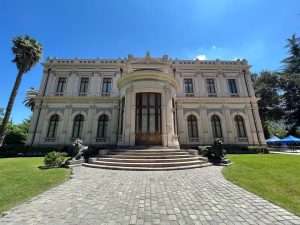Salt flats, wildlife, and more: Things to see and do in the Atacama Desert
By: Hernan Claro - 31 January, 2024

Growing in one of the world’s most extreme climates, the nature of the Atacama Desert is a testament to the will to survive. At Chile Travel, we want you to discover it and know what activities you can engage in.
Llamas, flamingos, various varieties of cacti, and the astonishing phenomenon of the blooming desert are some of the wonders you’ll encounter in the driest place on Earth.
The flora and fauna in the Atacama Desert have adapted to high temperatures and scarce rainfall, showcasing unique forms not found anywhere else in the world, leaving an indelible memory on visitors.
Cacti, shrubs, and the blooming desert
The flora in the Atacama Desert exhibits great resilience to water scarcity and salinity. Here, the Copiapoa cactus, popularly known as “coquimbano,” thrives, along with other variants that can reach up to seven meters in height.
The cachiuyo shrub and trees like the tamarugo and algarrobo are examples of vegetation in this area, while flowers such as celestina, velvet flowers, and field lilies bloom.
And we can’t forget the blooming desert, an impressive spectacle that occurs after scarce winter rains, bringing to life small seeds of guanaco hooves, malvillas, añañucas, or coronillas de Fraile.

Photo: Sernatur Audiovisual Bank.
The surprising fauna in the Atacama Desert
In the Atacama Desert, animals live near wetlands, salt flats, and lagoons, which are the scarce water sources in the area. South American camelids, including llamas, alpacas, guanacos, and vicuñas, are examples of animals adapted to high altitudes and extreme conditions.
Where to see llamas in Chile
Llamas are the most well-known camelids in Chile, with individuals reaching up to 1.90 meters in height.

Photo: Sernatur Audiovisual Bank.
They are mainly found in the high-altitude regions of Tarapacá and Antofagasta. A perfect spot to see llamas is the Salar de Tara, located about 150 kilometers east of San Pedro de Atacama.
Approach llamas responsibly, as they may spit or kick if they feel threatened. It’s advisable to hire a guide registered with Sernatur.
Where to see flamingos in Chile
With their distinctive pink color and long legs and necks, flamingos attract travelers worldwide and are one of the most photographed species in our country.
You can find these marvelous birds in the Salar de Pujsa, Miscanti and Miñiques lagoons, and the Salar de Atacama, which, along with the aforementioned Salar de Tara, are part of the Los Flamencos National Reserve.

Photo: Sernatur Audiovisual Bank.
Other animals inhabiting the Atacama Desert include desert foxes, vizcachas, long-tailed snakes, red-headed vultures, tench fish, and harriers, among many other species best discovered on your own.
Unmissable salt flats
The climatic conditions in the Atacama Desert give life to salt flats, places of extraordinary biodiversity. Their study has allowed researchers to understand the formation of the Earth.
Among the most famous are the Surire Salt Flat and the Atacama Salt Flat, covering approximately 17,000 and 15,000 square kilometers, respectively.

Photo: Sernatur Audiovisual Bank.
Another famous one is the Maricunga Salt Flat, located northwest of the city of Copiapó and near the Nevado Ojos del Salado, the highest peak in Chile at 6,981 meters above sea level and the highest active volcano in the world. The climb is a true challenge, recommended only for experienced mountaineers.

















